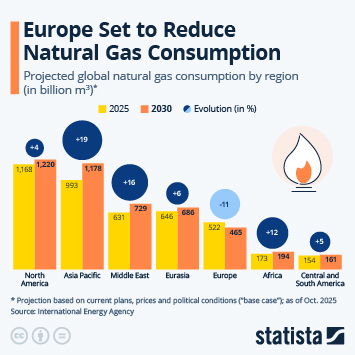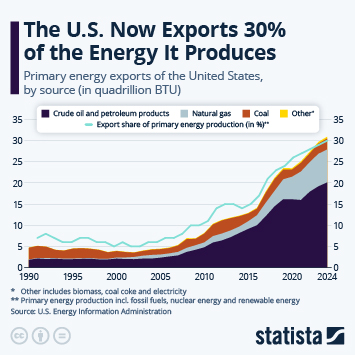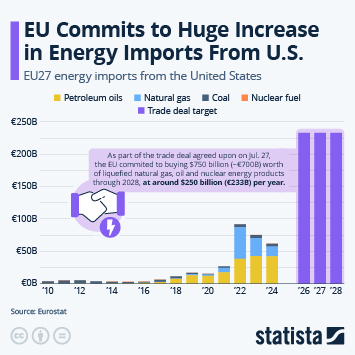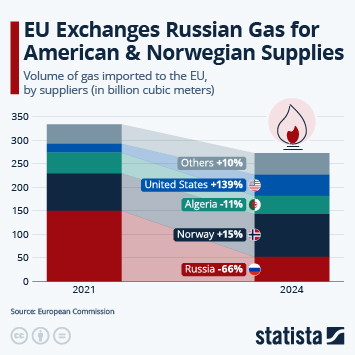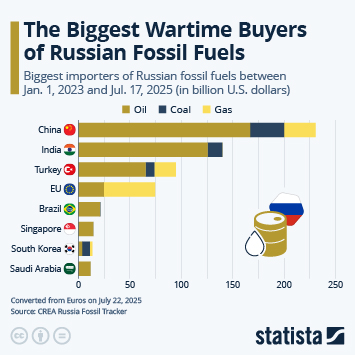As Europe desperately looks for alternatives to Russian gas in preparation for winter, liquefied natural gas (LNG) is one option being actively pursued, leading to significant increases in import levels over the last few months. Germany, previously heavily reliant on natural gas imports via pipeline from Russia, has even announced plans to construct three LNG import terminals - set to be the first in the country.
Profiting the most from this shift in energy policy so far has been the United States. The EIA announced this week that the U.S. had become the world's largest LNG exporter over the first six months of 2022 - 71 percent of which ended its journey in Europe. As this infographic shows, even before the war in Ukraine and the ensuing energy crisis, the U.S. was already one of the largest LNG exporters.
In 2021, Australia, with an export volume of 108.1 billion cubic meters, was the most significant LNG exporter. Qatar ranked second, followed by the United States. China was world’s largest LNG importing country in 2021. Last year, the country imported 109.5 billion cubic meters of liquefied natural gas. Following China was Japan, with imports totaling 101.3 billion cubic meters. In 2021 the total global LNG trade volume amounted to 516 billion cubic meters.








